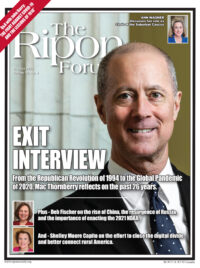
The triangular relationship between the United States, China, and India particularly resonates in current geo-politics since Covid-19. China’s belligerence has lent urgency to the need for a coalition of democratic countries to deal with China. It is an irony of history that the U.S. and India – two of the world’s largest and most vibrant democracies – could not engage with each other in a meaningful manner in the post-war period. It was only when communist China attacked India in 1962 that a new era of relations between India and the U.S. was set in motion. Since then, there has been no looking back, and the relationship between the two countries has been transformed from estranged democracies to engaged democracies.
The renaming of the U.S. Pacific Command as the Indo-Pacific Command on June 1, 2018 was a strategic gesture by the United States to co-opt India in the Indo-Pacific against the backdrop of China’s belligerence. In September 2018, the India-U.S. defense relationship received a major boost at the 2+2 Dialogue in New Delhi, where the “foundational” Communications Compatibility and Security Agreement (COMCASA) was signed between the two countries. COMCASA enables the Indian military to get a better picture of the Indian Ocean region, which is seeing an increase in Chinese activity.
The relationship between the two countries has been transformed from estranged democracies to engaged democracies.
Prime Minister Modi, in his characteristic style, hosted President Donald Trump in the capital city of Gujarat on February 24th of this year and regaled him in a rousing road show from the airport to the Motera stadium. The India-U.S. relationship was elevated to “Global Comprehensive Strategic Partnership” and Prime Minister Modi hailed it as one of the defining partnerships of the 21st century. When President Trump gave his address at Motera stadium, he referenced the elephant in the room and contrasted India’s democracy to China, which he called “a nation that seeks power through coercion, intimidation, and aggression.”
It was indeed a great strategic gesture on behalf of the U.S. to support India when a bloody clash took place between the armies of the two countries in the Golwan Valley on June 15th in which 20 Indian soldiers were killed and the Chinese army suffered a number of casualties as well. Launching a scathing attack on China, U.S. Secretary of State Mike Pompeo said, “The Chinese took incredibly aggressive action.” He also lauded India’s befitting response, saying, “The Indians have done their best to respond to that.”
On the night of August 29th, in the latest round of ongoing escalation on the Line of Actual Control (LAC) along the India-China border in Ladakh, the Indian Army thwarted the Chinese Army’s attempt to transgress into the Indian side. The U.S. supported India’s position. Reiterating Secretary Pompeo’s earlier remarks that the United States hoped for a peaceful resolution to the border standoff between the two countries, U.S. Assistant Secretary for East Asia and Pacific Affairs David Stilwell asked both sides to follow their commitment to resolve the issue through peaceful means and dialogue.
The U.S. also supported India’s courageous move to ban 118 mobile apps in light of new information that they engaged in activities which are prejudicial to the sovereignty, integrity, defense, and security of India and public order. In fact, The State Department developed their own initiative to ensure that Americans’ privacy, companies’ proprietary information, and their own diplomatic communications are protected by eliminating possible vulnerabilities through telecommunications services, app stores, cloud storage, and undersea cable infrastructure. They called on “all freedom-loving nations and companies” to join them in their efforts in instituting a ‘Clean Network,’ which the Trump Administration rolled out in response to the possibility of aggressive intrusions by malign actors such as the Chinese Communist Party.
Throughout Covid-19, we have seen an unprecedented level of solidarity between President Trump and Prime Minister Modi.
The outbreak of coronavirus and its spread also resonated within the triangular relationship among the three countries. The growing estrangement between India and China and corresponding bonding between President Trump and Prime Minister Modi was evident from a new development. Prime Minister Modi spoke to nearly all world leaders in April, including President Trump, but not to a top Chinese leader, suggesting an estrangement between the two leaders.
Throughout Covid-19, we have seen an unprecedented level of solidarity between President Trump and Prime Minister Modi. In a telephonic conversation with Trump on April 4th, Modi reiterated India’s solidarity with the U.S. in overcoming the global crisis together and to resolutely and effectively combat Covid-19. The words of intent were quickly demonstrated in concrete action when Modi rescinded an extant domestic law that banned the export of hydroxychloroquine (HCQ) to the United States at the request of President Trump for the treatment of American COVID-19 patients at a time when there was pressing domestic demand for the drug.
President Trump reciprocated the goodwill gesture when the U.S. handed over 100 ventilators, valued about $1.2 million, to India on June 16th. Now, there are at least three possible vaccines which American and Indian companies are working together to develop and test.

Rup Narayan Das retired as joint secretary in the Lok Sabha Secretariat of Indian Parliament last year and is a senior fellow of the Indian Council of Social Science Research at the Indian Institute of Public Administration in New Delhi.




